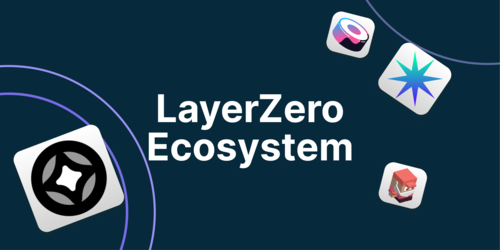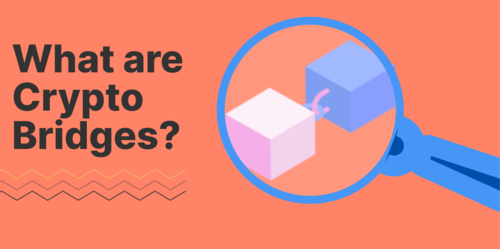What Is Stargate Finance?
Stargate Finance is an interoperable cross-chain liquidty protocol that enables users to transfer native assets cross-chain in a single transaction through the protocol's unified liquidity pool.
Key Takeaways
-
Stargate Finance is a highly composable liquidity protocol that allows for cross-chain transfers in one-click, enhancing blockchain interoperability.
-
The main features of Stargate Finance are instant guaranteed finality, native asset transactions and unified liquidity.
-
STG is the native token of Stargate Finance, with multiple use cases to create a robust ecosystem around Stargate Finance.

With the ever increasing number of blockchains, transferring liquidity across these chains have become an essential aspect to achieve interoperability (the ability of blockchains to communicate and share data). The ease of transferring liquidity across different chains allows users to interact with various decentralized applications (dApps), and increases the type of protocols that can be built with interoperability between otherwise nonconforming chains (e.g. cross chain borrowing and lending etc.). However, one of the biggest concerns currently is the difficulty in transferring native tokens from one network to another.
Enter Stargate Finance, an interoperable solution that allows users to transfer native assets cross-chain in a single transaction through the protocol’s unified liquidity pool. Having recently crossed $1 billion in monthly volume and over one million transactions in a single month, his article will dive deeper into what Stargate Finance is, its main features, how it works, the use cases, and the Stargate Finance token (STG) tokenomics.
What is Stargate Finance?
Stargate Finance is a fully composable, cross-chain liquidity protocol built by LayerZero Labs in March 2022. It is an interoperability solution that integrates liquidity pools from multiple decentralized finance (DeFi) protocols. The platform allows users to transfer native tokens across various blockchains, including Ethereum, BNB Chain, Avalanche, and Fantom, without wrapping tokens, in a simple manner. Layer 2s such as Arbitrum, Optimism and zkSync Era are also supported. In addition, transfers carried on Stargate Finance has instant guaranteed finality.
Stargate Finance provides a suite of products, including a cross-chain decentralized exchange (DEX) for native transfers, liquidity pools and farms for users to earn yield. Before we move on to learn more about Stargate Finance, let’s understand the importance of interoperability.
Importance of Interoperability
Simply put, interoperability enhances the robustness of DeFi significantly. Blockchains have historically been known to be siloed networks, and were unable to achieve cross-chain communication given the different architecture they have. This inherently led to fragmentation of liquidity and the use cases that could be built were limited, as DeFi protocols only had access to their own liquidity.
With interoperability solutions, it has become easier for liquidity to flow among the different blockchains and DeFi protocols. This improved the liquidity accessible by protocols, helping them to offer users with transactions that have lower price slippage.
Currently, the most common interoperability solution is bridges. However, there are some shortcomings to bridges, let’s explore this in more detail:
The Bridging Trilemma

When building a cross-chain bridge, there are three core characteristics developers strive to achieve:
-
Instant Guaranteed Finality: After a transaction request is made and approved by the user on the source network, the receiving of assets on the destination chain should be definite.
-
Unified Liquidity: With multiple chains having access to a single unified liquidity pool, the liquidity will be deeper, benefitting users and applications using it. This also serves as a sign of bridge reliability, further attracting even more liquidity.
-
Native Assets: The transfer is executed with native assets. This removes the need for additional steps and fees associated with obtaining suitable assets for wrapped assets bridging.
Given that it’s a trilemma, developers are usually required to sacrifice one or two features. There have been multiple bridge architectures proposed, bringing to users a different suite of bridging characteristics. Let’s explore the current cross-chain landscape, and particularly, the most common bridge architectures.
Current Bridging Landscape
There are various bridging solutions currently, including lock and mint, burn and mint, etc. However, these bridges can hardly be considered as efficient as the process entails numerous steps, demands a good understanding of how a specific bridging protocol works, and can be costly. In addition, security has been a concern revolving bridges. There have even been multiple bridge exploits that have resulted in significant amounts of user funds being stolen, including that of Ronin (~$200 million hacked), Wormhole ($236 million hacked), Nomad (~$190 million hacked).
More importantly, the major downside of existing solutions is the lack of composable liquidity. This is because of traditional bridges’ mechanism, which relies on fractured liquidity. With fractured liquidity, there are siloed pools for distinct tokens and each chain is required to maintain their own liquidity pool. In addition, when new networks are introduced to the bridge, there is a need to create a fresh pool. This manual addition leads to bottlenecks that limits the ability of the bridge to scale. Eventually, it might result in problems such as high fees and long bridging times. In addition, it fractures the liquidity provision user experience, as liquidity providers (LPs) will be required to provide liquidity across multiple pools, making management of liquidity provision positions a problem too.
Stargate steers away from this existing architecture, and has integrated novel features to tackle the flaws of fractured liquidity framework.
How Stargate Finance Works
Delta Algorithm is a novel balancing algorithm that allows for native asset transfers with instant guaranteed finality, made possible through unified cross-chain liquidity pools, which allows all chains and DeFi applications integrated with Stargate Finance to deposit and withdraw from one single liquidity pool. The conventional problem faced with unified liquidity pools is that numerous concurrent withdrawal requests made on the same pool could potentially drain it before the requests have been fulfilled, leading to high reversion rates.
With Delta Algorithm, Stargate Finance is able to programmatically control the unified liquidity pool to prevent it from being drained before users’ transfers have been carried out. Generally, the Delta Algorithm empowers all chains in Stargate Finance to maintain individual liquidity pools that are “soft-partitioned” into multiple portions. For example, the Ethereum network can have a liquidity pool of $75 million. Within this pool, a designated amount can be assigned to BNB Chain (say $10 million), another $12 million to Fantom, and more.
Soft-partitioning ensures that pools can freely borrow from the sub-pools during liquidity crises and pay later – after transactions are processed. This gives the Delta Algorithm the flexibility to process big simultaneous requests and mitigate liquidity gaps. However, the major limitation of the Delta Algorithm is the possibility for requests to deplete the available funds for a pool and its sub-pool. Stargate has introduced rebalancing fees to mitigate the scenario.
Rebalancing fees are basically transaction fees that incentivize users to move liquidity in a manner that maintains all balances higher than their initial values. A protocol typically begins with optimal asset balance. Every time a user carries out a transfer, the pool becomes unbalanced. Rebalancing fees will incentivize users to refill assets that are low in balance, and dis-incentivize users from depleting certain assets. The rebalancing fees are a function of both the transaction size of a user’s transfer and the current pool balance.
Rebalancing fees collected from the transfers will be accumulated and sent to a reward pool. This amount is then distributed to the users that have assisted in rebalancing the pools. The quantum of rewards received by users will be dependent on how close the user’s refilling transactions brings the pool balance to the target balance.
Unique Features of Stargate Finance
Stargate Finance has several novel features that distinguish them from existing bridges.
Instant Guaranteed Finality
Transfers executed on Stargate Finance have instant guaranteed finality. The protocol requires all destination chains to have sufficient reserve balances for swap requests to be processed accordingly. Should there be insufficient reserve balances, the transfer will not be executed. Hence, there is no possibility for transaction reversion. This prevents users from encountering bridging failures which arise from liquidity issues or incompatibility of wrapped tokens. Once a transfer has been submitted and approved on the source chain, users are guaranteed to receive the native tokens on the destination chain. This minimizes the need for users to pay unnecessary gas fees for transaction failures.
Native Asset Transfers
Users are able to swap native tokens on a 1:1 basis across chains by leveraging Stargate's unified liquidity pool . Upon transfer completion, users will receive a native asset, rather than synthetic tokens, which typically have limitations to their use cases. This also eliminates the need to go through multiple steps to obtain tokens that are suitable for wrapped asset transfers, which typically incurs higher cost.
Cross-chain Interoperability
Stargate Finance allows one-click swaps for all tokens and chains. Single-click swaps eliminate the need to move a token on a network for another on a different network. For example, you can swap Ethereum USDT for BUSD, even though USDT is on the Ethereum network and BUSD is on the BNB network.
Unified Liquidity Pools
Stargate Finance allows users to access liquidity pools from various blockchains. This provides the opportunity for LPs to participate in liquidity mining activities in as many pools as they wish, all through a single interface. Stargate mainly supports stablecoins liquidity pools to prevent the risk of impermanent loss.
This also creates deeper liquidity for the entire DeFi ecosystem. This eventually translates to minimization of slippage and increases the reliability of DeFi protocols as they now have a larger pool of liquidity to tap on.
Use Cases of Stargate Finance
Native Asset Transfers
Users can swap native assets between blockchain networks with instant guaranteed finality. When users swap using Stargate Finance tokens (STG), they enjoy the benefit of not having to pay for protocol transfer fees, while non-STG token swaps will incur a 0.06% fee.
Liquidity Provision
Users that are more experienced with DeFi applications can provide liquidity to Stargate Finance’s liquidity pool. For this contribution, liquidity providers (LPs) are rewarded with stablecoins , which represents 0.045% of every transfer that takes place on Stargate Finance. The rewards received will be proportional to the liquidity provided. LP tokens, which are received upon providing liquidity, can be redeemed at any time, giving users the opportunity to earn extra yield in a flexible manner.
STG Tokenomics
STG is the native token for Stargate Finance. STG tokens can be staked on the Stargate Finance platform to receive veSTG (vote-escrow STG), the governance token. Since Stargate Finance operates with a decentralized governance model, veSTG will give holders the right to vote on governance proposals which are used to make changes to the platform, with examples including the platform fees, and target asset balance. A time-based reward system is used, where the longer a user stakes their STG, the more veSTG they can earn. This helps to ensure that the circulating pressure is low and aligns investors interested in the company’s long-term success.
STG has a maximum supply of 1 billion, with a circulating supply of 205 million tokens, and is priced at $0.56 One hundred million STG tokens, representing 10% of the total supply, were sold during funding rounds to raise funds for creating liquidity across seven chains. Below is a complete breakdown of STG’s initial distribution:
-
17.50% is allocated to the Team
-
17.50% is allocated to Investors
-
15.00% is allocated to Protocol Launch
-
15.95% is allocated to Bonding Curve
-
2.11% is assigned to the Initial Emissions Program
-
1.55% is allocated to Bonding Curve DEXs
-
30.39% is allocated to the Community

Regarding STG’s supply schedule, the allocations for the team, investors, and initial launch auctions are vested for 1-2 years to maintain the circulating supply low throughout the project’s early development stage. However, community allocations were unlocked upon launch to allow the team and community to allocate funds effectively and grow the protocol.

You can buy STG on popular exchanges like Binance, BTCEX, BKEX, Gate.io, Coinbase Exchange, and Huobi Global. Check out the Stargate Finance markets section on CoinGecko for more exchanges.
Final Thoughts
Current bridge architectures are limited by the bridging trilemma, where it is difficult to achieve all three desired characteristics: instant guaranteed finality, unified liquidity pools, and native assets. Stargate introduces a novel bridge architecture integrated with a delta balancing algorithm to optimize for bridge characteristics. With the STG token that allows for staking and liquidity provision, Stargate aims to create a robust ecosystem built on LayerZero.

CJ is a business graduate that has been involved in crypto for 4 years and specializes in DeFi protocols. He is also interested in TradFi becoming DeFi, and has written for ByBit, SwitcheoLabs, and others. Follow the author on Twitter @fishmarketacad









 Or check it out in the app stores
Or check it out in the app stores